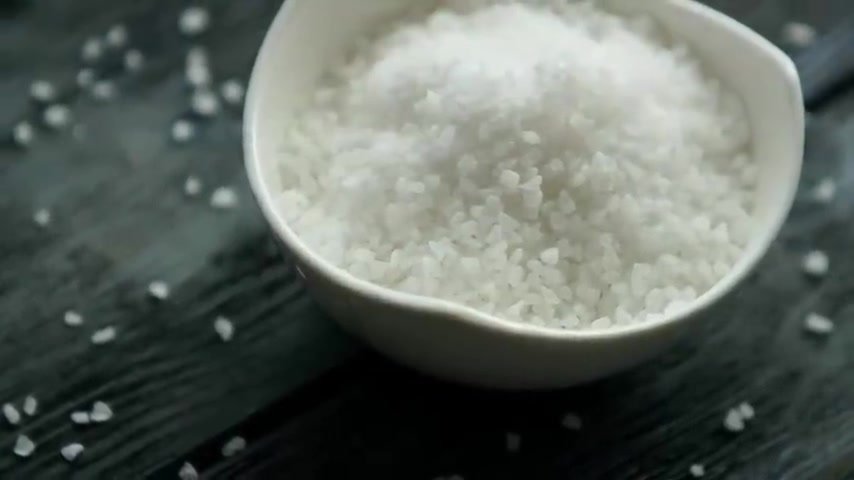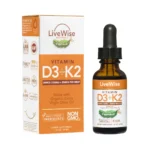Table of Contents
Himalayan salt has gained popularity in recent years as a healthier Sea Salt alternative, but is it truly better than regular sea salt? Keep reading to find out as we compare these two salts and uncover which one may provide the greatest benefits.
Both Himalayan salt and sea salt are commonly used salts, but are they really the same? While they share some similarities, there are important distinctions between the two salts in terms of their mineral composition and source. This article will explore the key differences between Himalayan salt and sea salt, including their microplastics content, trace mineral profiles and health effects. We’ll also examine which salt may be the better choice for optimal health and well-being.
Himalayan salt vs. sea salt
I want to talk about the difference between Himalayan sea salt and just regular sea salt .
Is there a difference ? There is . It’s a big difference .

The great majority of both of these have sodium chloride .
They both have trace minerals , but sea salt has microplastics or nano amounts of plastic .
In 1 study , it showed that 90% of all the brands that were tested had microplastics .
However , in Himalayan sea salt , 0 plastics .
Why ?
Because of the deposits that make up the Himalayan salt comes from an ancient sea before humans , before the pollution .
Health effects of microplastics
Now the problem with microplastics is that it gets into our system .
It creates inflammation .
It creates a lot of problems because it can act as an endocrine disruptor and it does take a little bit of time to degrade and break down , about 500 years .
So what you need to do is limit your exposure to it .

So I do not recommend consuming sea salt unless it’s Celtic sea salt or it could be pronounced Celtic .
This is from France . It’s cleaner .
There’s probably some others that are fine too , but regular sea salt comes from the ocean which is polluted , and chances are it will have microplastics so you want to avoid that .
Table salt concerns
Now that then brings up , the question about table salt . What about that ?

So majority of the population is just consuming table salt .
They have no idea that that too has microplastics , no trace minerals , just sodium chloride .
It’s bleached some of the time .
They even add sugar to it some of the time , and sometimes they add an anti caking agent aluminum , which is toxic to your brain .
So what I’m trying to do is increase your awareness and focus in on a healthy salt because we need salt .
Why we need salt
| Salt | Microplastics Content | Source | Other Contents | Uses in Body | Daily Amount Needed | Additional Tips |
|---|---|---|---|---|---|---|
| Himalayan Salt | None | Ancient unpolluted sea | Trace minerals | Stomach acid, adrenals, immunity, hydration, insulin, muscle function | 1-2 tsp depending on activity level and sweating | N/A |
| Sea Salt | Contains microplastics (90% of brands) | Polluted modern oceans | Trace minerals + microplastics | As above | As above | Avoid unless Celtic sea salt |
| Table Salt | Contains microplastics | Not specified | Sodium chloride only, sometimes added sugar or aluminum | As above | As above | Contains unnecessary additives |
| Celtic Sea Salt | Fewer microplastics than sea salt | Cleaner source from France | Trace minerals | As above | As above | Alternative to regular sea salt |
| Microbiome | N/A | N/A | Certain gut bacteria can break down microplastics | Support gut health to help eliminate microplastics | ||
| Foods | N/A | N/A | Cruciferous vegetables and omega-3s help detoxify and reduce inflammation | Incorporate these foods regularly |
In summary, Himalayan salt is the best choice due to lack of microplastics and higher mineral content from an ancient pure source. Sea salt and table salt contain unnecessary microplastics. A healthy lifestyle supports eliminating microplastics.
We needed to make hydrochloric acid in our stomach to actually kill off microbes , help us digest protein , and assimilate minerals .
Our adrenals need a certain amount of salt .
Our immune system needs a certain amount of salt .
If we’re low on salt , the risk of getting insulin resistance goes up .
Salt helps with hydration .

Also it’s involved in the sodium potassium pump which is needed to power your muscles and your nerves and give us energy .
how much salt do we need ?
We need between 1 and 2 teaspoons depending on your activity level , how much you’re sweating .
But when you do keto , you wanna do at least 1 teaspoon if not a little bit more each day because of all the water weight that you’re losing and with the water weight loss comes a loss of electrolytes as well .
Extra tips for microplastics
Now a couple things that you can do in addition to avoiding exposure to microplastics because it’s in the water from the plastic bottles that you’re using and also the canned water .
It’s in a lot of different things especially if you’re using , microwaves with plastics and even styrofoam cups
If you have good friendly bacteria There’s been some studies that show that certain microbes in your microbiome can help break down some of these plastics .

Number 2 , consuming cruciferous food on a regular basis helps to dismantle and eliminate endocrine disruptors in general .
And also , consuming enough omega 3 has a tendency to keep your inflammation down because 1 of the problems with microplastics is inflammation .
And so if you counter that with taking things that keep your inflammation low , you can minimize the damage to some degree . But definitely don’t consume just regular sea salt .
Go with the Himalayan salt or go with some other salts like Celtic salts that don’t have microplastics .
key Points
- Himalayan salt is actually very different from standard sea salt. Here’s why.
- Although both Himalayan salt and sea salt have trace minerals, sea salt also has microplastics. One study found that 90% of sea salt products had small amounts of plastics.
- However, Himalayan salt has zero microplastics. Why? Himalayan salt is sourced from an ancient sea that existed before humans and pollution.
- Microplastics can create a lot of inflammation in the body because they act as endocrine disruptors. Microplastics also take 500 years to break down.
- Do not use sea salt unless it’s Celtic sea salt. This is a much cleaner version of sea salt from France.
- What about table salt? Well, not only does table salt have microplastics, but it is also bleach and doesn’t contain trace minerals. Additionally, table salt can contain added sugar and aluminum as an anti-caking agent.
We need a good-quality salt to help:
- Make HCL
- Support the adrenals
- Promote immune health
- Hydrate the body
- Promote healthy insulin levels
- Support the sodium-potassium pump
- You need around 1-2 tsp of salt per day. This depends on your activity level. If you sweat a lot, this can increase your need for sodium.
- If you’re on keto, you want a bare minimum of 1 tsp of salt a day. This is because, as you lose fat, you also lose water weight and electrolytes. Salt is a vital electrolyte.
- Some studies show that certain microbes in your body can help break down microplastics. Make sure your microbiome is healthy. Additionally, cruciferous vegetables and omega-3 fatty acids can help detoxify your body, eliminate endocrine disruptors, and keep inflammation down.
DATA
https://onlinelibrary.wiley.com/doi/abs/10.1111/j.1745-459X.2010.00317.x
FAQ
Is Himalayan Salt Healthier Than Sea Salt?
Himalayan pink salt and sea salt are often marketed as healthier alternatives to table salt, but research does not support unique health benefits. All salts, including Himalayan, sea salt, and table salt, consist primarily of sodium chloride.
Himalayan salt and sea salt contain trace minerals like potassium, iron and zinc, while table salt is more highly refined and processed. However, these minerals are present in very small amounts and are unlikely to provide significant health effects
The sodium content is similar across different salt types. A teaspoon of regular table salt contains about 2,300 mg of sodium, while a teaspoon of Himalayan salt contains about 2,200 mg
Which Salt is the Healthiest?
There is no definitive “healthiest” salt. Consuming too much of any type of salt, including Himalayan, sea salts, and table salt, can raise blood pressure and increase the risk of heart disease
The American Heart Association recommends limiting sodium intake to no more than 2,300 mg per day, which is about 1 teaspoon of salt. For optimal health, it’s best to consume all salts in moderation.
What is the Best Salt for Cooking?
Himalayan salt, sea salt, and kosher salt have a coarser texture than table salt, which some prefer for cooking. Himalayan salt and sea salt can be used similarly to table salt for cooking and seasoning
Unrefined kosher salt is ideal for cooking because the uniform crystal shape makes it easy to pinch and sprinkle over food. Avoid iodized table salt, as it is highly processed and contains anti-caking agents
Is Himalayan or Sea Salt Better for Skin?
Himalayan salt and sea salt offer similar benefits for skin. The minerals in salt can help maintain the skin’s natural barrier, supporting hydration and keeping out irritants
Salt is a popular exfoliant, physically sloughing off dead skin cells and leaving skin feeling soft and smooth. It also has natural antibacterial properties to cleanse and purify the skin[
Difference Between Himalayan, Sea Salt and Table Salt
The main differences are:
- Composition: All salts consist primarily of sodium chloride. Himalayan and sea salts contain trace minerals, while table salt is more refined.
- Processing: Himalayan salt is hand-extracted and minimally processed. Sea salt is evaporated from seawater. Table salt undergoes extensive processing and refining.
- Color: Himalayan salt has a pinkish hue from iron oxide. Sea salt ranges from white to gray. Table salt is pure white.
- Sodium content: Similar across all salt types, with a teaspoon containing around 2,300 mg of sodium
Is Himalayan Salt Good for High Blood Pressure?
No, Himalayan salt is not recommended for those with high blood pressure. While it contains trace minerals, the sodium content is still high and can contribute to elevated blood pressure
Consuming too much salt of any kind, including Himalayan, sea salt and table salt, is a risk factor for high blood pressure and heart disease. Limiting sodium intake is important for managing hypertension
Himalayan Pink Salt Side Effects
Himalayan pink salt is generally considered safe when consumed in moderation as part of a balanced diet. However, excessive intake may lead to:
- High blood pressure from the sodium content
- Digestive issues like nausea, vomiting and diarrhea from the high mineral content
- Mineral imbalances, especially in those with kidney or heart conditions
As with any salt, Himalayan pink salt should be used in moderation. Those with certain health conditions should consult a doctor before increasing salt intake[6].
Himalayan Salt vs Kosher Salt
Himalayan salt and kosher salt are both minimally processed and free of additives. The main differences are:
- Himalayan salt is hand-extracted from ancient sea salt deposits in Pakistan. Kosher salt is evaporated from brine
- Kosher salt crystals are uniform squares that are easy to pinch and sprinkle over food. Himalayan salt comes in varying crystal sizes
- Himalayan salt contains trace minerals, while kosher salt is pure sodium chloride
- Kosher salt is ideal for seasoning and cooking due to the crystal shape and ease of use. Himalayan salt can be used similarly
Sea Salt vs Himalayan Salt for Hydration
Both sea salt and Himalayan salt contain minerals that can help maintain the skin’s natural barrier and support hydration. However, using salt topically does not cause the same dehydrating effects as consuming salty foods.
The minerals in salt, such as magnesium, calcium and potassium, can help the skin retain moisture and prevent water loss. This can leave skin feeling plump, smooth and refreshed
Himalayan Salt vs Sea Salt Sodium Content
The sodium content is similar between Himalayan salt and sea salt. A teaspoon of either contains around 2,200-2,300 mg of sodium
The slight variations in sodium levels are due to differences in crystal size and processing methods. But overall, the sodium content is comparable between the two salt types
Difference Between Himalayan Salt and Celtic Salt
Himalayan salt and Celtic salt are both minimally processed, unrefined salts that contain trace minerals. The main differences are:
- Origin: Himalayan salt comes from ancient sea salt deposits in Pakistan. Celtic salt is harvested from the Atlantic Ocean off the coast of France
- Color: Himalayan salt has a pinkish hue. Celtic salt ranges from gray to pink depending on the mineral content
- Flavor: Celtic salt has a sweet, mild flavor. Himalayan salt has a more pronounced salty taste
- Sodium content: Similar, with a teaspoon containing around 2,200-2,300 mg of sodium




